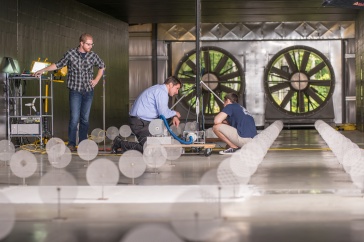Q: I’m looking for tips to make gardening easier, cheaper and more fun. Got any gardening hacks you could share? Bill J - Laconia
A: From recycling worn out home goods to creating your own tool for a specific task, there are many creative gardening solutions that save money, simplify tasks, and keep gardening the enjoyable, rewarding experience it should be.
UNH Cooperative Extension brings information and education into the communities of the Granite State to help make New Hampshire’s individuals, businesses, and communities more successful and its natural resources healthy and productive. For over 100 years, their specialists have been tailoring contemporary, practical education to regional needs, helping create a well-informed citizenry while strengthening key economic sectors.
Recycle materials
Empty plastic water and milk containers can create lots of different tools for the garden. Wish you had extra watering cans around? Take an old plastic milk container, ideally one with a screw-on top, drill ten small holes in the lid, fill with water and replace the cap. Presto! Without spending any extra money, you have a great watering jug. Play around with the size of the holes to create a finer or coarser stream of water.
Plastic containers like this also make great garden cloches. These act as instant miniature greenhouses to protect heat loving plants from cool nights or even the occasional light frost early or late in the growing season. Simply cut off the bottom inch of the jug and set it over you transplants in the garden. Nestle to bottom of the jug into the soil and pull up a bit of extra soil around the edges to help keep it in place.
Remember to remove these once the cold weather passes, as they will heat up quickly on sunny days. Too much heat could injure plants. On cooler days, pop the cap off to allow hot air to escape.

Potatoes and roses
Don’t let rose cuttings go to waste. Using a clean screwdriver, bore a hole into a potato to accommodate the cutting. Select a rose cutting several inches long, dip it in rooting powder, and insert it into the hole. Yes, potatoes can be used to supply moisture and nutrients to the cuttings as they root.
Plant the potato in a pot or your garden in an area with afternoon shade. Water regularly and check back in a few weeks to see if it has rooted. This process works best during the cooler weather of later summer.
Something for the kiddos
Getting creative with space just for fun is one of the best part of gardening. With kids, gardens can be transformed into spaces just for them to use their imaginations. Plant climbing vegetation like green beans on long poles to form a tepee that will eventually fill in to create private spaces all their own.
Sunflower houses are also a big hit. Dig up a circular foot-wide strip, creating a space about 8 feet in diameter. The inside of the circle can be left as grass. Liberally plant sunflower seeds inside the strip, and by mid-summer there will be a secret sunflower hideaway for kids only.
Go vertical
Constrained by a small yard? Vertical gardening can save space and look cool. Using rain gutters to grow all kind of different plants allows outdoor wall space to become a growing area. Mount gutters to the wall and arrange so that the top row drains into the row beneath, and so on down the line.
Wooded pallets also make great planters for vertical gardening. Simply cover the back with landscape fabric, additional wooden slats, or anything that allows soil to be added from one side while the pallet lays flat on the ground. Add a high quality potting mix, plant your transplants, and allow time for them to sufficiently root. Prop the pallet up and enjoy your vertical garden.
Find a pot, any pot
As many of us are starting seeds now, the search for a suitable container is ongoing. Small seedlings can be started in egg cartons, used egg shells, yogurt containers, plastic clamshells that once held greens and virtually any other food grade container.
Drainage and airflow are critical, so add drainage or ventilation holes where needed. Also remember that very small containers will need water more frequently and seedlings may need to be transplanted into larger containers as they grow. When the time comes to move plants outside, concrete blocks make a quick frame for raised beds. Pallet wood can also be recycled for cheap raised beds that will last a few seasons.
Get heat wherever you can
Heat from household appliances can be a great place to start seedlings. My house is cold in spots, so seeds are often started downstairs near the woodstove. The top of the fridge is another good spot. Plastic domes or plastic wrap over the trays will keep moisture in while seeds germinate. Keep a close eye and remove the plastic at the first sign of green popping through. Heated seed mats will also ensure the soil is warm for germinating seeds.
Consider making your garden beds to accommodate hoops that extend the season or protect plants from impending cold weather. Make homemade hoops from PVC, electrical conduit or even heavy gauge slick wire used for high tensile fencing and cover with clear plastic or even old bed sheets in a pinch.
Water-wise hacks
At planting, place a plastic bottle with several holes drilled throughout at the base of plants so that just the top sticks out. Fill this bottle to allow for slow, deep watering.
Irrigating by wicking is also becoming popular. Simply insert a woven nylon rope into the container filled with water. Wind the other end of the rope around the interior of your pot where plant roots can access, then plant and fill with soil. The rope will act as a wick supplying on-demand water to you plants. This system can used in a garden beds by using a larger water reservoir and laying rope along the rows.
UNH Cooperative Extension’s Education Center answers questions about gardening and more at answers@unh.edu or by calling 877-398-4769 Monday through Friday, 9 a.m. to 2 p.m.

















































